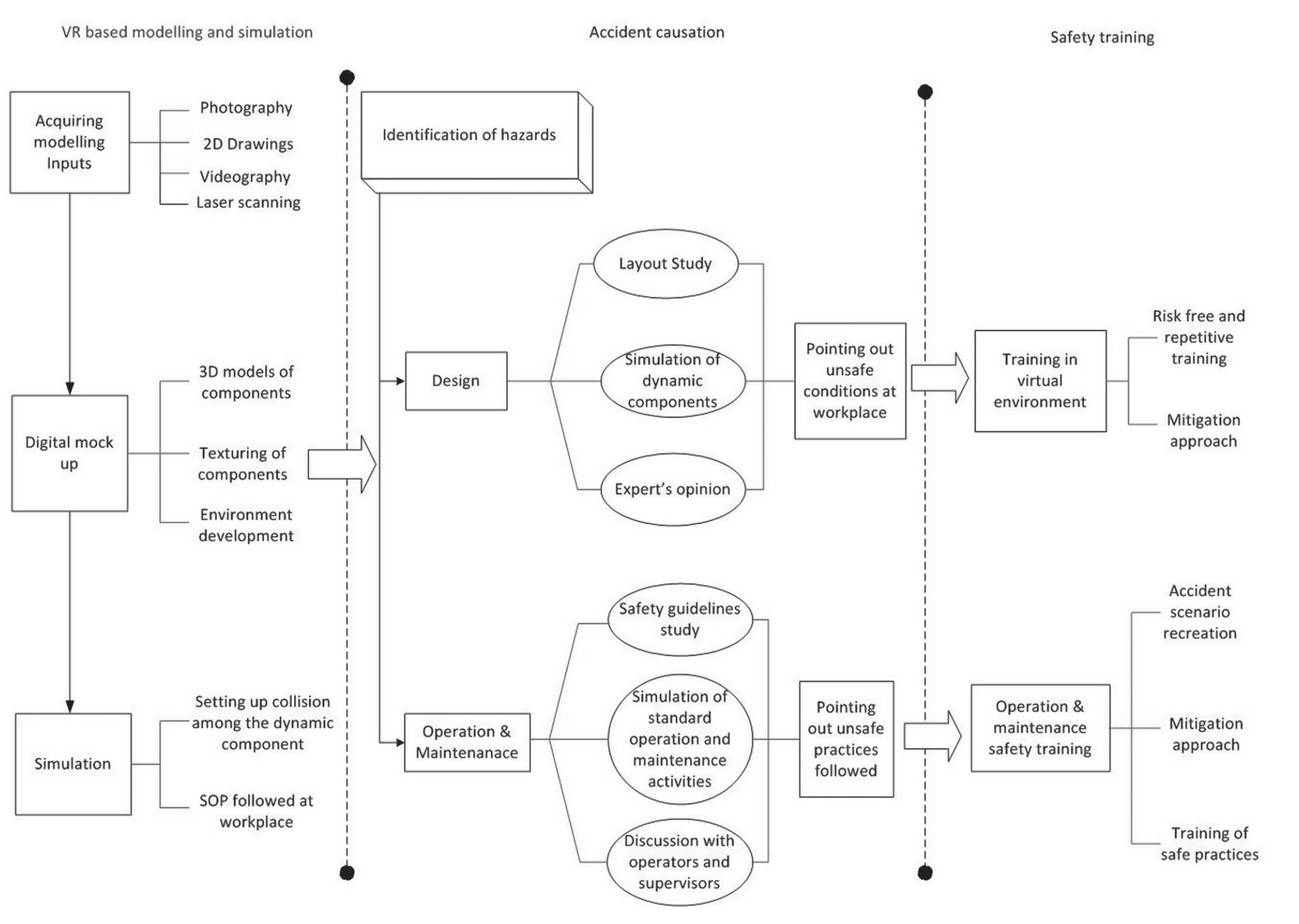Fully immersive virtual simulations can boost industrial accident prevention
Industries must embrace 3D modeling with fully immersive virtual simulations in their occupational safety management systems. According to a new study from the University of Vaasa, Finland, this will help them to optimize accident prevention.
The benefits of VR (Virtual Reality) technology stem from its capacity to present a replica of any facility, situation or process to be used for assessment or training. Furthermore, when used effectively, VR can reduce risks in companies’ operations. It can provide users with better work practices and improve hazard perception through instructions relevant to products, processes or working environments.
“Such features are vital to accident prevention since traditional industrial safety training methods have mainly been monotonous and boring without adequate interactions of related tasks to stimulate learning and retention. This is particularly problematic as the current generation of employees is more conversant with games, devices, and programs. Learning within this sphere is more acceptable to them,” says Ebo Kwegyir-Afful who will publicly defend his doctoral dissertation at the University of Vaasa, on Friday, the 28th of October.
Ebo Kwegyir-Afful bases these claims on the statistical evidence of experiments conducted at the Technobothnia research center in Vaasa between 2017–2022. The experiments were designed to demonstrate the potential of VR in accident prevention during manufacturing processes and maintenance activities at facility conceptual stages. Two industrial 3D models were utilized: lithium-ion battery manufacturing factory and a gas power plant.
According to the experiment results, VR can boost the salient areas of industrial accident prevention: safety training, hazard identification and risk assessment (HIRA), and emergency preparedness and response (EPR) initiatives. These are the three core areas of industrial accident prevention according to the ISO 45001: 2018 standard.
“When utilized appropriately, VR can enable industries to achieve significant safety countermeasures by increasing or improving safety training, HIRA and emergency preparedness and response initiatives to be more interactive and engaging. With these measurements the entire organizational safety management system will become more effective,” says Ebo based on his doctoral study.
A significant part of the HIRA process includes controlling and mitigating perceived hazards for rectification while designing the factory model. To this end, the study emphasizes safety countermeasures at the factory conceptual stages.
Citation:
Fully immersive virtual simulations can boost industrial accident prevention (2022, October 27)
retrieved 27 October 2022
from https://techxplore.com/news/2022-10-fully-immersive-virtual-simulations-boost.html
This document is subject to copyright. Apart from any fair dealing for the purpose of private study or research, no
part may be reproduced without the written permission. The content is provided for information purposes only.
For all the latest Technology News Click Here
For the latest news and updates, follow us on Google News.

